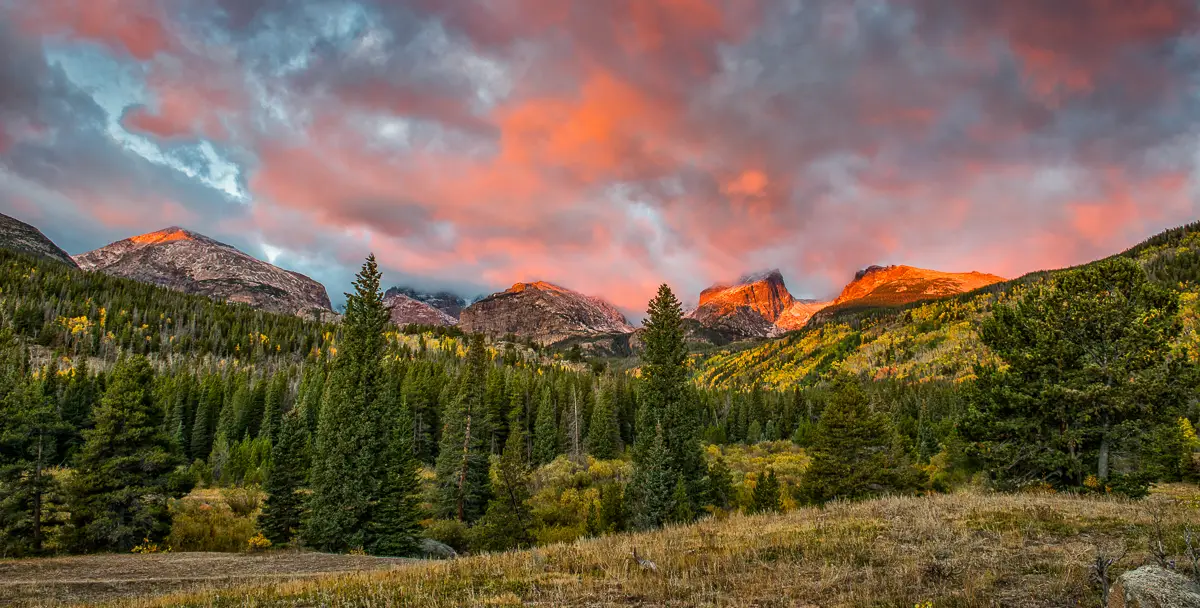
Fall Photo Options | Mid September - Mid October
Estes Park Photo Tours
The best Rocky Mountain National Park Fall Photo locations pre-scouted for you
Yellow Wood Guiding offers private Estes Park Guided Tours of Rocky Mountain National Park in Estes Park, Colorado.
Check Availability Photo Gallery Book Now
In your booking email select one or a few of these options and I can plan a trip to try to get as many great shots as we can. Climate Change is making Fall Color much harder to predict exact dates, in the last 20 years of guiding peak color has been 10 days early and up to 18 days late. So I will be watching the color all season and guide you to the best spots that day will offer.
If you are not sure you can always have a "Guide's Choice" tour for either Landscape or Wildlife and we can target the best options that day will offer.
Unless otherwise stated these tour options can be part of a 4, 6, or 8 hour trip. Don't see the option you want, we can customize a trip just for you.
Fall Colors
NOTE: Generally we can not get parking for Aspen Shots if we target Elk in mid-September mornings. Parking is extremely limited in the Aspen areas, and fills up nearly at sunrise if not before. You need to choose Aspens or Elk.
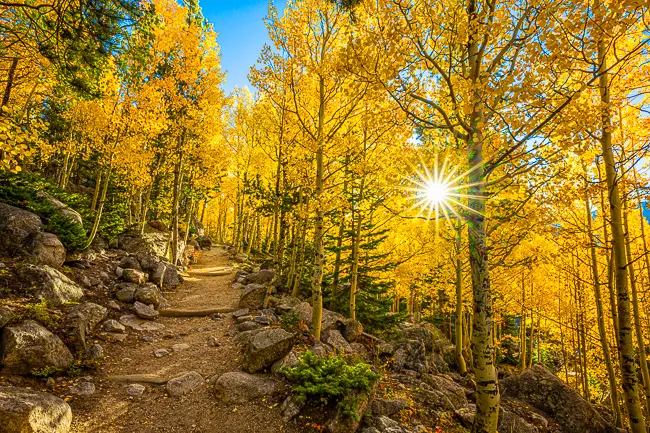
Bear Lake Area Shots
The colors the Bear Lake Area of Rocky offer are amazing. Generally best from Sept. 20th - Sept. 29th. Morning or evening may be best depending on your goals for shooting. Shorter slight uphill walks.
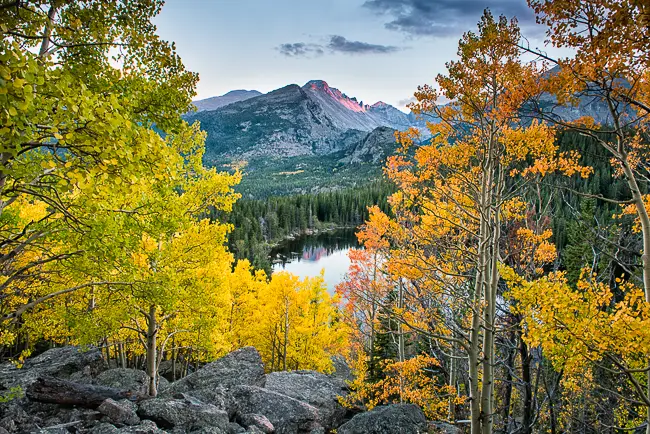
Short But Harder Hiking Spots - Sunrise/Sunset
There are a number of shorter heart pumping hikes of 100 to 200 yards that can produce fantastic photographs. Often these locations require some rock scrambling or a step climb.
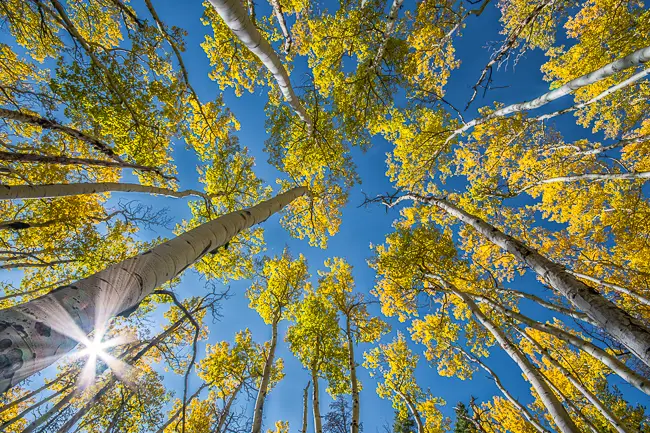
Aspen Grove and Trunk Shots
As fall progresses there are a number of Aspen Grove and trunk shots that are great for cloudy days. Some of these groves require a short hike, others are roadside locations. Later in Fall there are few aspen locations with grand mountain backgrounds.
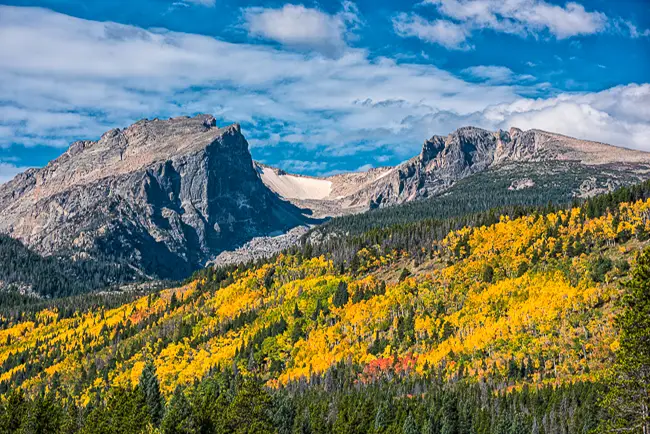
Aspen Landscapes
As the color moves downhill the Aspen take center stage and fill the frame entirely. This is a great time for the classic shots of aspen trunks and grand landscape locations that decline through October. Sept. 24th - Oct. 10th. Generally best in the morning.
Elk Rut
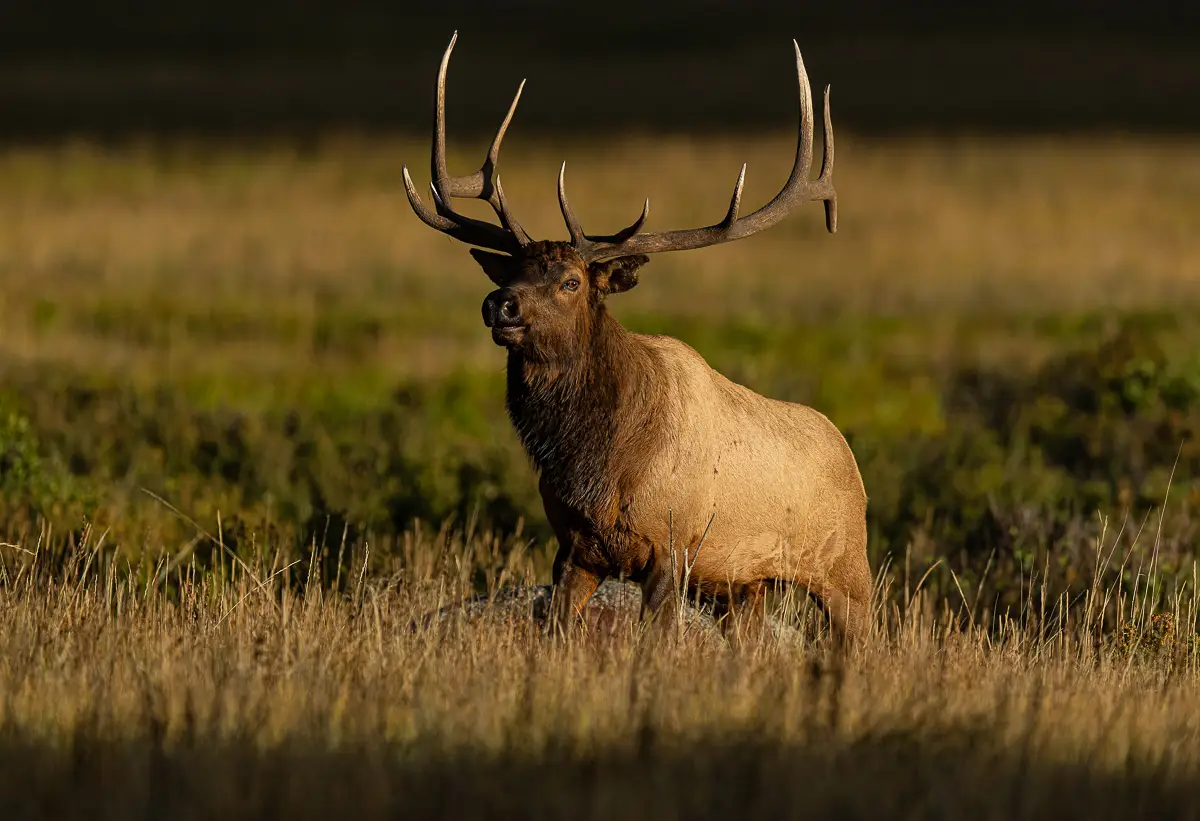
Elk Rut
Sept. 8th - Oct. 20th is the Elk's rutting season. Each morning and evening, dozens and sometimes hundreds of elk congregate in the park's meadows. Mornings offer less crowds but the time the elk are out is generally only about an hour after sunrise. In the evening we can have 1.5 hours and up to 3 hours of elk action if it is cool enough. Evening offers some of the best light but the photo above is morning light. The park services closes walking in the meadows, so we park on the road sides. We will never be alone, but because of the closed meadows the elk are often in great locations from 30 to 500 yards away depending on the luck of your day.
If you want to see elk fighting show up within the first 2 weeks of the rut, the earlier generally the better but your chances are extremely slim to see a fight. Later on during the Elk Rut in October they leave the national park and head for the green grass areas of Estes Park like the golf courses. During this time wild shots are harder requiring F2.8 and F4 lenses for clean backgrounds. Later season offers more headshots and quick fights with medium reach lenses are a bit more common.
Other Fall Wildlife
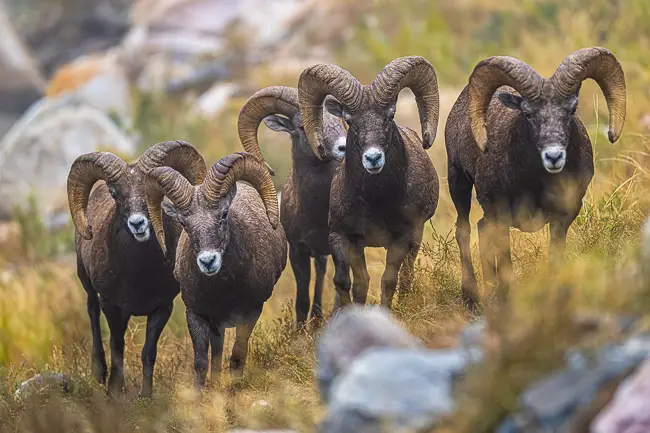
Bighorn Sheep
Bighorns can be found starting in early September in an area outside of the national Park. Usually we can find them at a photographable distance about 40% of the time in September and about 65% of the time into October. We are more likely to see Ewes and Lamb groups, but Bighorn Rams can sometimes be found as well. Later October is the start of the Sheep Pre-rut and finding rams becomes more common. Oct 20th - Nov 28th is best.
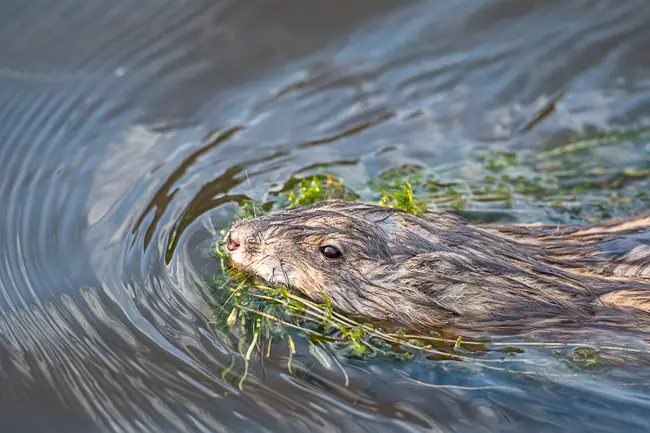
Muskrat and Beavers (Evenings Only)
Rocky's beaver population is just starting to come back after major overgrazing from Elk destroying their habitats. Some days we can see the beavers but getting clear shots is about a 5% at our one area. In a area about 20 minutes away there is a Muskrat colony with a near 100% chance to see them close. In that same location there is a 5% chance for moose in the lake as well. They are always in very low light right before dark and almost never out in the mornings.
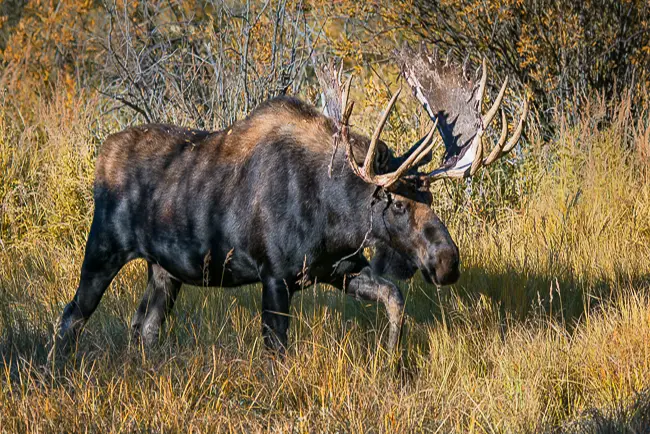
Moose
Sept. 1st - 8th Moose pre-rut at the same time as the elk rut. Moose can be found unpredictably on the east side of the park near some of the low elevation lakes in early to mid September. After that moose become very hard to find. 75% to see a moose cow, 10% for bull moose before Sept 8th. Only 5% after Sept 9th.
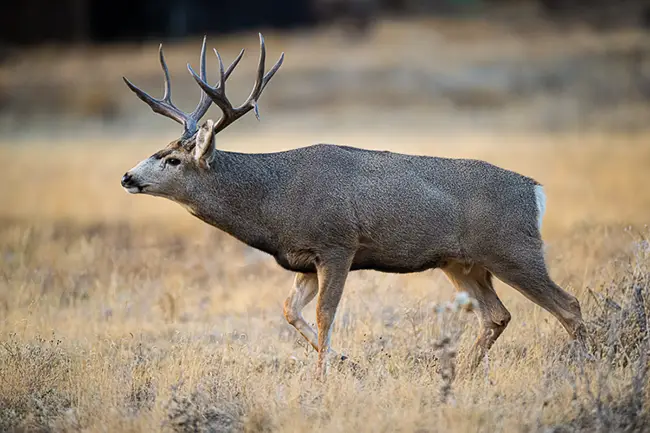
Mule Deer
Mule Deer are often ignored during the Elk Rut but bucks and does can be found in September. Sometimes the elk will chase off the deer for dominace. When October comes the Mule Deer become more common with great views of bucks and does at closer distances offering great photos.
Sunrise
Sunrises in the fall are often really great. About 70%-80% of the mornings we get great color in the mountains, clear blue skies, very few clouds, a just a bit of wind.
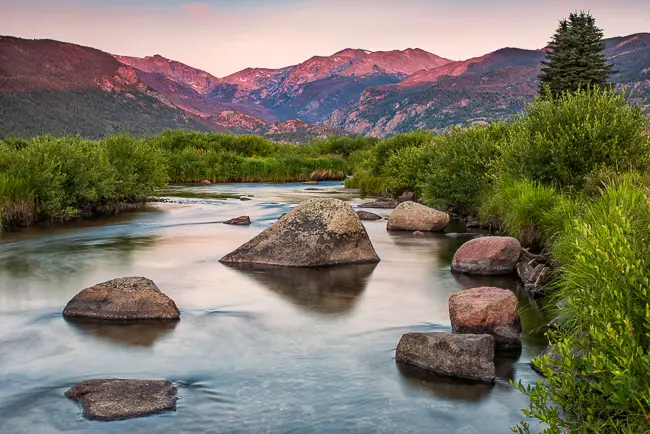
Moraine Park Sunrise
Moraine Park offers a great view of the mountains with a large grassy meadow. Due to closures of the meadows we have to shoot along the road this time of the year. This is a drive up location which requires a start of 30 minutes before sunrise. The elk are often in Moraine Park so they can hinder our access but we can quickly change from shooting sunrise to Elk.
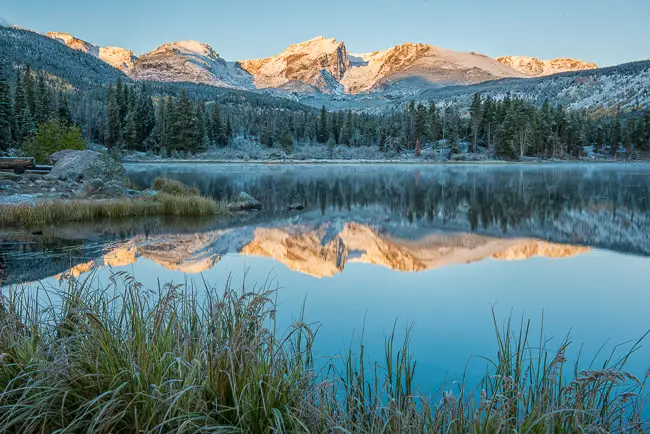
Sprague Lake / Storm Pass
Sprague Lake offers a great mountain range reflecting in a subalpine lake. Some mornings you can get great reflections, and the wide view offers a good number of compositions. If we have wind Storm Pass is a great shot that in peak color can be even better than Sprague Lake.This destination requires a start time 45 minutes before sunrise.
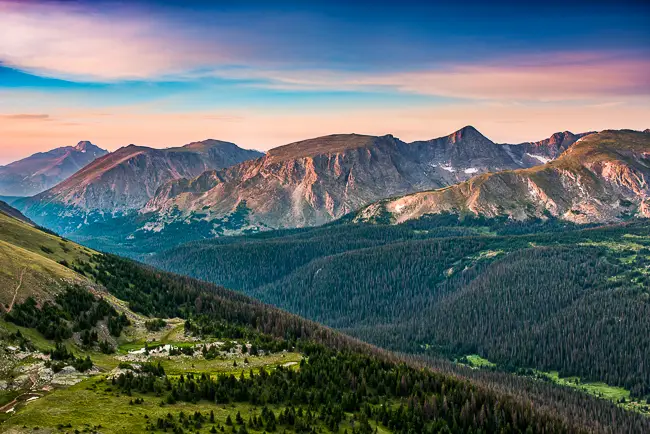
Tundra Sunrise - Roadside or Hiking
Sunrise is amazing anywhere in the park, but sunrise on the tundra can be breath taking, literally. It could be 20 degrees in the morning. But you can watch as the mountains come to life with the warm pinks and orange light of sunrise. This option requires a 1 hour before sunrise start for the roadside and 1 hour and 30 minutes for the hiking option. This option will not offer Elk shooting after sunrise. NOT AVAILABLE after October 1st.
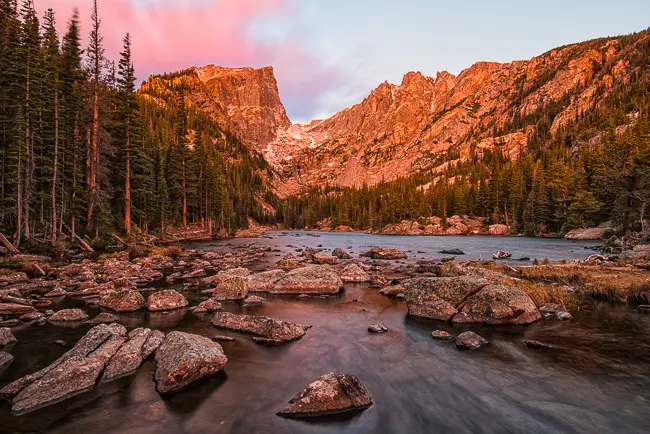
Dream Lake Sunrise - Easy to Medium Hike
Sunrise at Dream Lake is one of the best 1 mile hike photo spots in the park, and it produces some fantastic photos. It is an easy hike for fit individuals, medium difficulty for folks from lower elevations and are not as active. This tour requires a start of 1 hour and 30 minutes before sunrise. This trip takes about 3 hours with a few great side trips like Nymph Lake, a cascading stream, and some great overlooks. This option will not offer Elk shooting after sunrise.
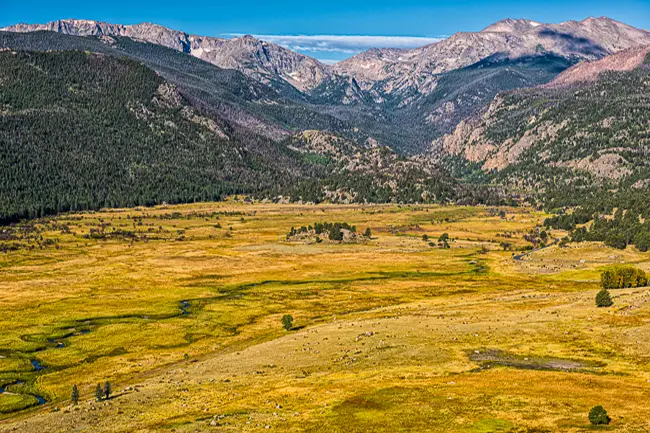
Moraine Park Overlook - Medium .25 mile Hike
Moraine Park is a grand glacial valley, and after this short but steeper 175 foot climb we gain a fantastic high view over the entire valley, with the river snaking below in the green meadows with a large view of Stones Peak. This short hike will take most fit people about 15 minutes with a few stops to catch your breath, so it requires a 45 minute before sunrise start. From this location we can also shoot a very nice view of Long's Peak, as well as a different view of the Mummy Range. From here we can go down into Moraine Park or travel the rest of the east side of the park for wildlife or landscape options.
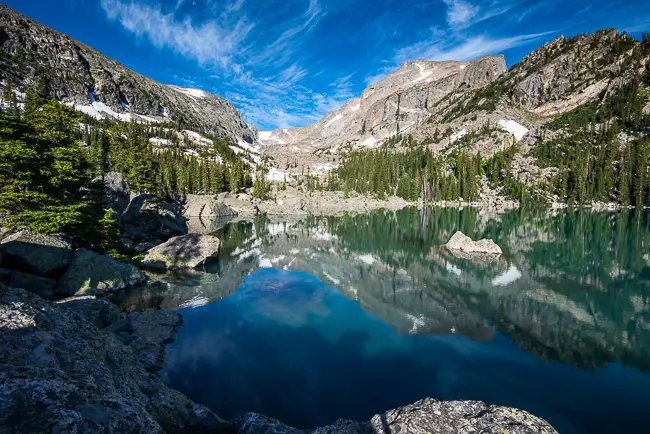
Dream Lake and Lake Haiyaha - 6hr Hike
Sunrise at Dream Lake is one of the best 1 mile hike photo spots in the park, and it produces some fantastic photos. It is an easy hike for fit individuals, medium difficulty for folks from lower elevations and are not as active. This tour requires a start of 1 hour and 30 minutes before sunrise. This trip takes about 3 hours with a few great side trips like Nymph Lake, a cascading stream, and some great overlooks. With the last hour we can focus on marco, small mammal wildlife, or other landscape options like Moraine Park or Sprague Lake. This option will not offer Elk shooting after sunrise.
Sunset & Waterfalls
Sunsets in Rocky are not as reliable as sunrise. The standard fall weather pattern is blue skies in the morning with building clouds and a potential thunder storm in the afternoon. Generally right before sunset the clouds break, but there are a number of nights that the clouds never break. Waterfalls are best in low light after sunrise or before sunset, and great for cloudy days.
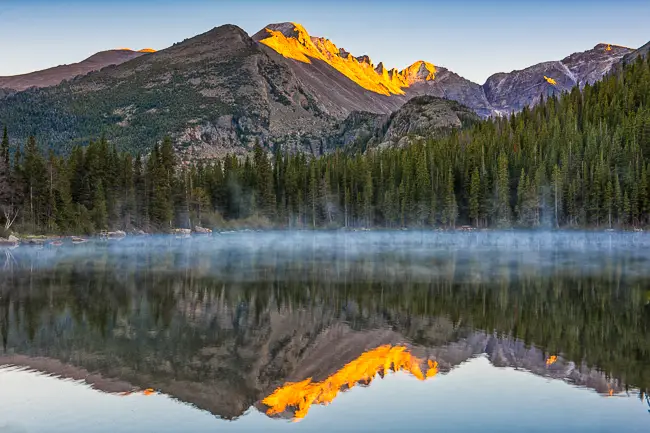
Bear Lake Sunset
This end of the tour option ends with an easy to get to a wonderful subalpine mountain lake with great mountain scenery. In mid to late Sept there are some fall colors.
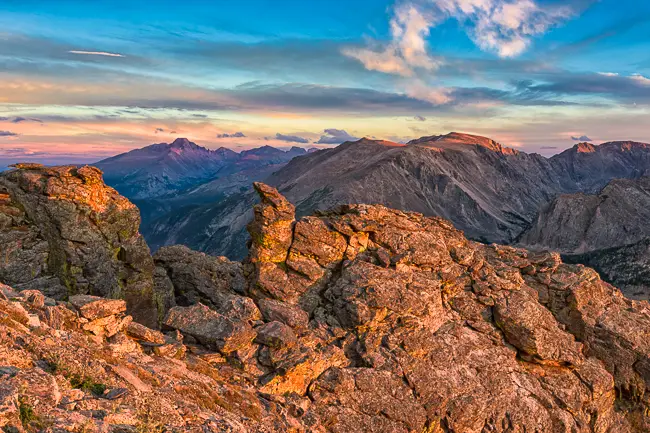
Tundra Sunset
Sunset on the tundra can be amazing but also very cold. Shot from Ansel Adams locations and from others even more spectacular. (Available until Trail Ridge Closes)
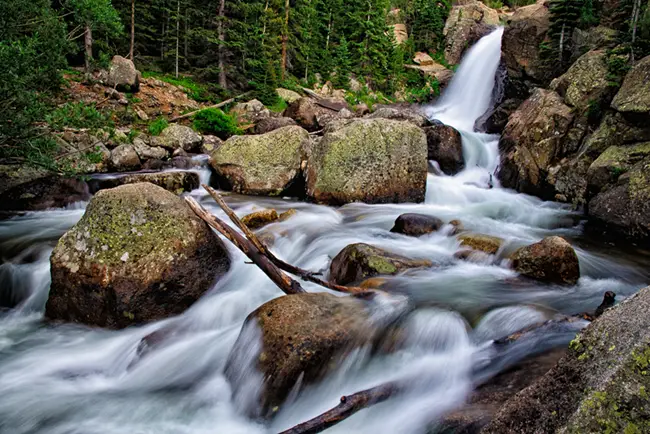
Glacier Creek and other Falls
Fall offers some great chances to photograph river cascades and waterfalls as they reduce in strength as the snow melt ends for the year. Some are roadside short walks, others can be 2 mile round trip hikes.
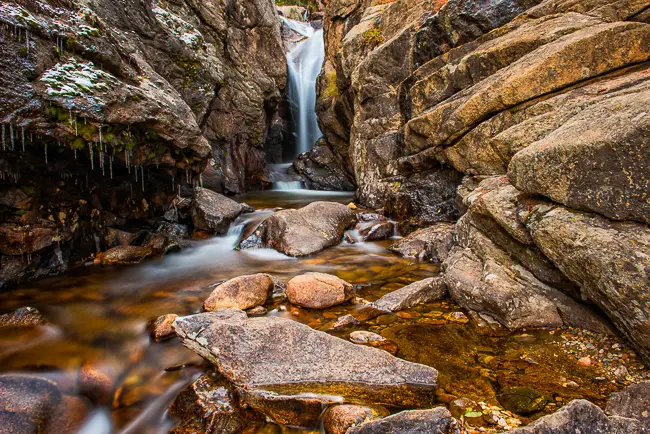
Chasm Falls - 2 mile Hike
This waterfall is a 30 minute walk up Fall River Road. Chasm Falls offers a few different shots and other white water cascades. Chasm is a great option in the late afternoon because the falls are shadowed by 5pm.
Fall Tour Fees - September - Mid October
(Total Is Shown NOT Per Person, Rate Is The Same For 1 Or 2 Guests)
| Guests | 1 or 2 | 3 or 4 |
| 4 Hour Tour Total (Most Recommended) | $325 | $425 |
| 6 Hour Tour Total | $525 | $675 |
| 8 Hour Tour Total | $700 | $900 |